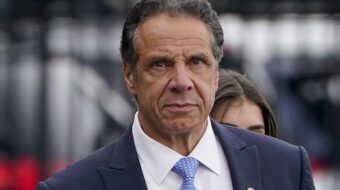
The decline in initial claims for jobless pay announced by the U.S. Labor Department this week was greeted as a “good sign” by Heidi Shierholz, a researcher at the Economic Policy Institute. But it only underlines the need for stronger federal efforts to create jobs to bring the nation out of the worst recession since the Great Depression, she said.
“It’s a sign that the pace of new layoffs may be slowing down. But the numbers of workers being laid off is still enormously high,” Shierholz told the World in a phone interview. “We’re still adding over half a million to the jobless rolls each month. This is a deep, deep recession.”
Indeed the number of workers receiving unemployment compensation increased to 6.78 million, the largest total on records dating back to 1967, and the 17th straight record week. More than 13 million are officially counted as unemployed and millions more who have given up the search for a job aren’t counted in that total. Black workers suffer 15 percent unemployment and Latino workers 11.3 percent.
Shierholz predicted that the nation’s jobless rate, 8.9 percent in April, “will continue to rise for another year.” She added, “The fact that this decline in initial jobless claims is greeted as a good sign tells us just how bad it is, how far we have fallen.”
She added, “It is absolutely crucial that people not look at these figures and say, ‘Oh, things are turning around and we can back off from job-creating initiatives.’”
An example of the action needed was Rep. Rosa DeLauro’s (D-Conn.) introduction May 20 of a bill to create a National Infrastructure Development Bank. It would provide capital to speed hundreds of job-creating public projects in transportation, environmental protection, modernization of the electric power grid and broadband communication.
Flanked by leaders of the labor and “green jobs” movements and investment bankers at a Capitol Hill news conference, DeLauro said, “Not only will we create jobs and spur economic growth, but we will make the critical investments necessary to build state-of-the-art infrastructure systems for the 21st Century — ensuring we do not again allow our nation’s roads, bridges and electrical grid to reach the deterioration we have seen in recent years.”
Ray Poupore, executive vice president of the National Construction Alliance, a joint venture of the United Brotherhood of Carpenters and the Operating Engineers, AFL-CIO, told the news conference, “Given the 20 percent unemployment rate in the construction industry, Rep. DeLauro’s infrastructure development bill is timely and we will aggressively support it through passage into law.”
Mark H. Ayers, president of the AFL-CIO Building and Construction Trades, cited the American Society of Civil Engineers’ (ASCE) finding that the U.S infrastructure deserves a grade of “D” and that $2.2 trillion is needed to build and repair bridges, roads, schools, our power grid and our telecommunications system. DeLauro’s bill “is a strong first step towards addressing this critical economic, social, and national security issue,” he said.
Banker Felix Rohatyn called for passage of the bill “to create employment” and “increase competitiveness.”
ASCE President Wayne Klotz hailed President Obama’s American Recovery and Reinvestment Act but told reporters at the news conference, “It is not enough.” He urged Congress to approve DeLauro’s bill quickly. “A sustained effort is needed to repair and maintain the economically vital infrastructure systems of the nation,” Klotz said. “This nation cannot afford to wait much longer to invest significant sums in its infrastructure.” Every $1 billion in federal funds for public works infrastructure creates 47,500 jobs and $6.2 billion in economic activity, he noted.
Robert Borosage, co-director of the Campaign for America’s Future, deplored the short-term “pay-as-you-go” mentality in the U.S. Congress that blocks long-range investments. Spending on public works infrastructure projects has dropped below 4 percent of gross domestic product, he said. “Our post-World War II infrastructure is decaying and we aren’t replacing it.”
DeLauro’s development bank would “create jobs in the short term and economic growth in the long term,” he said.
Modeled on the European Investment Bank, it would be capitalized with $5 billion in federal appropriations and a total of $250 billion in total subscribed capital available from the U.S. Treasury if needed.
EPI’s Shierholz stressed, “Just to keep pace with population growth, we needed to create 2 million jobs over the past 16 months. Instead we lost 5.7 million jobs. Add those two figures together. We need to create 7.7 million new jobs to get back to where we need to be.”
greenerpastures21212 @ yahoo.com









